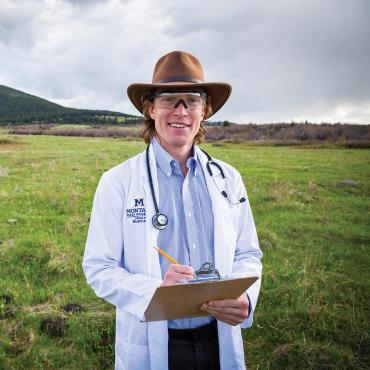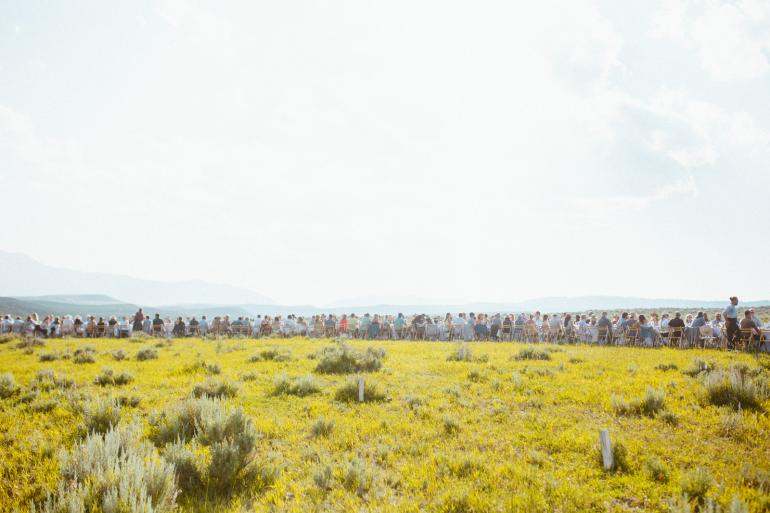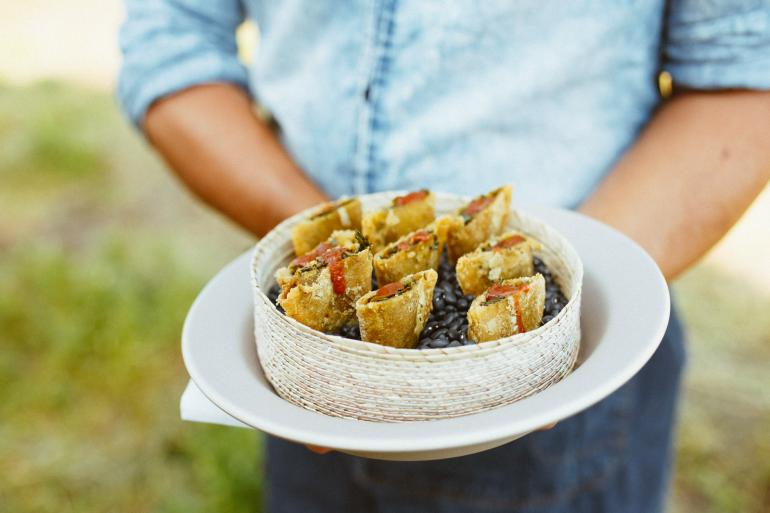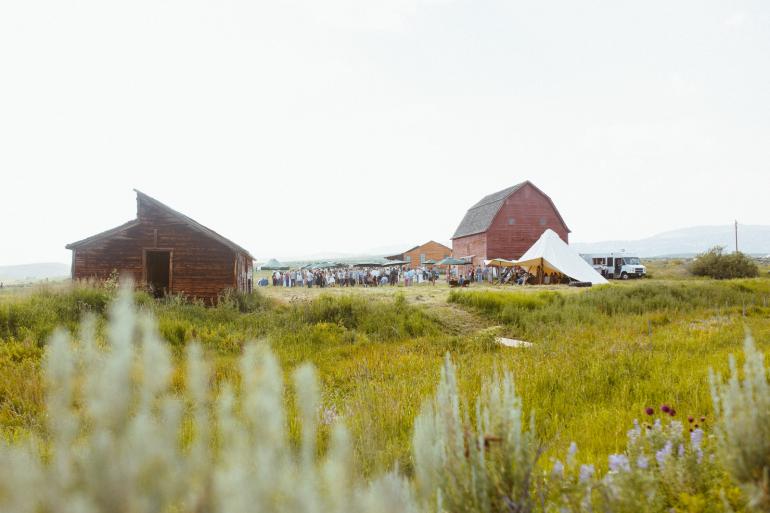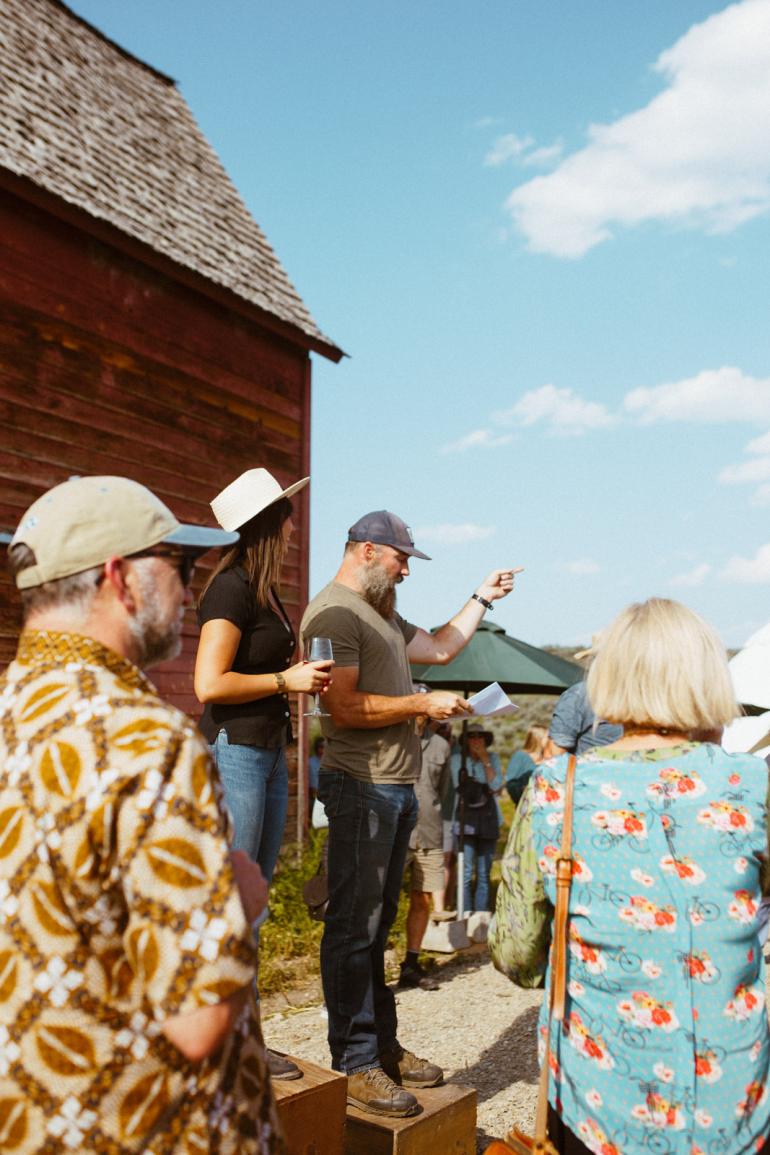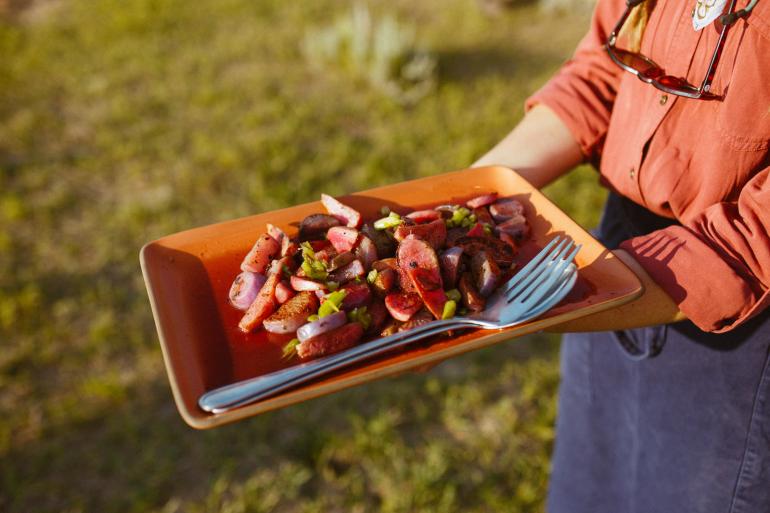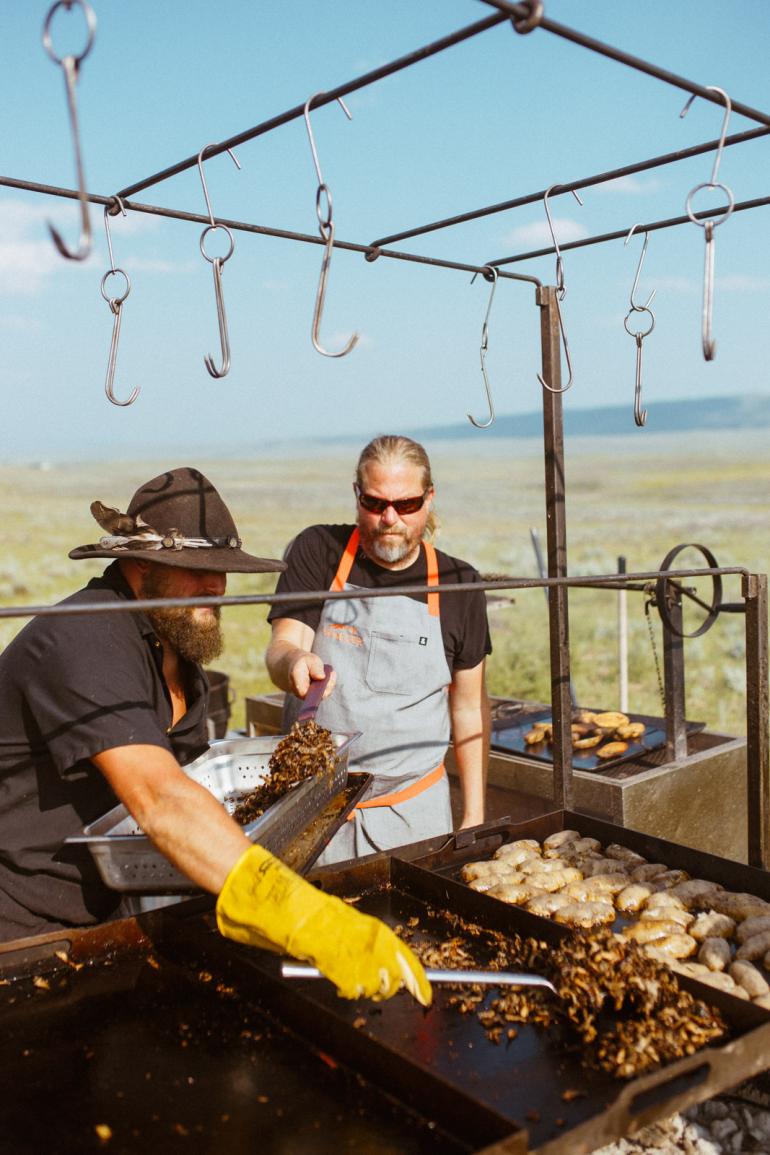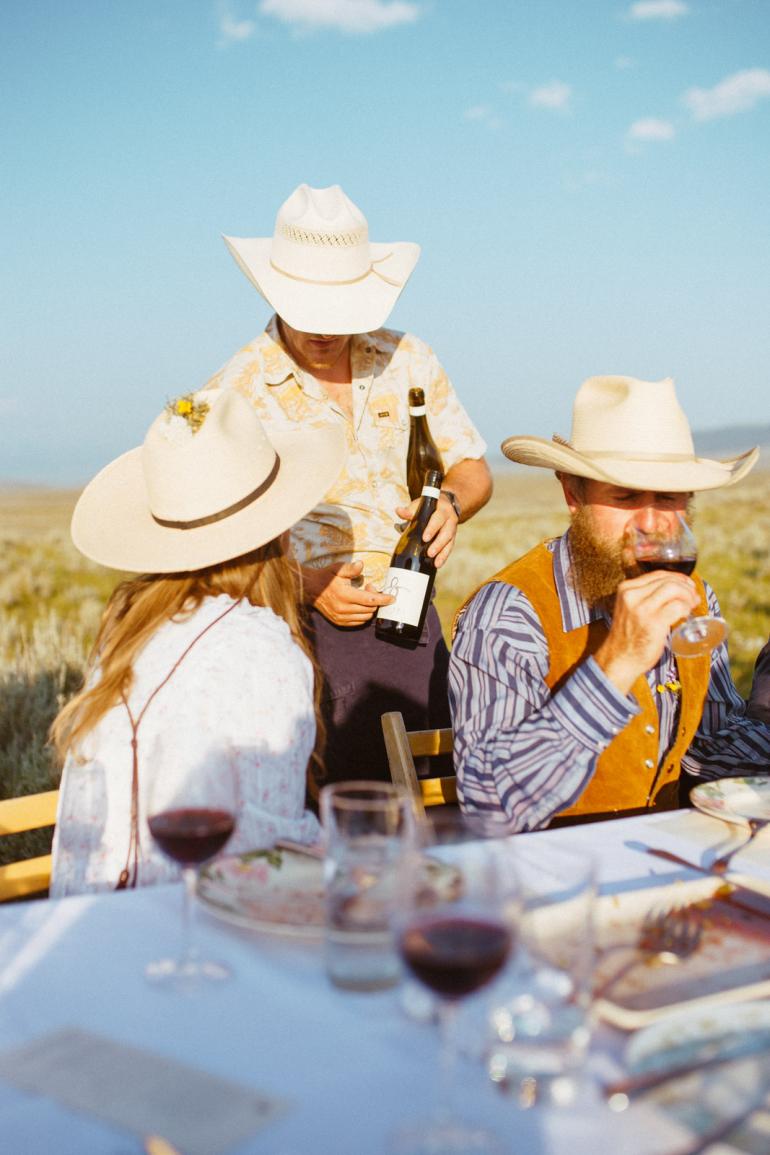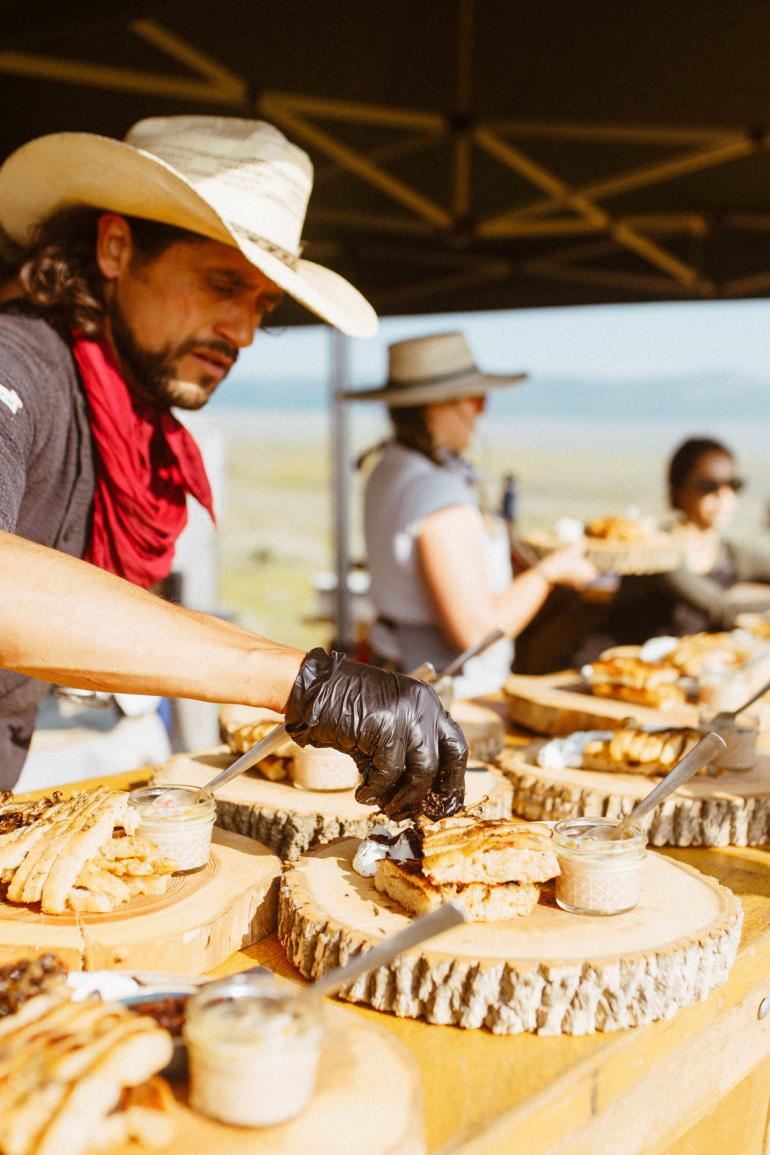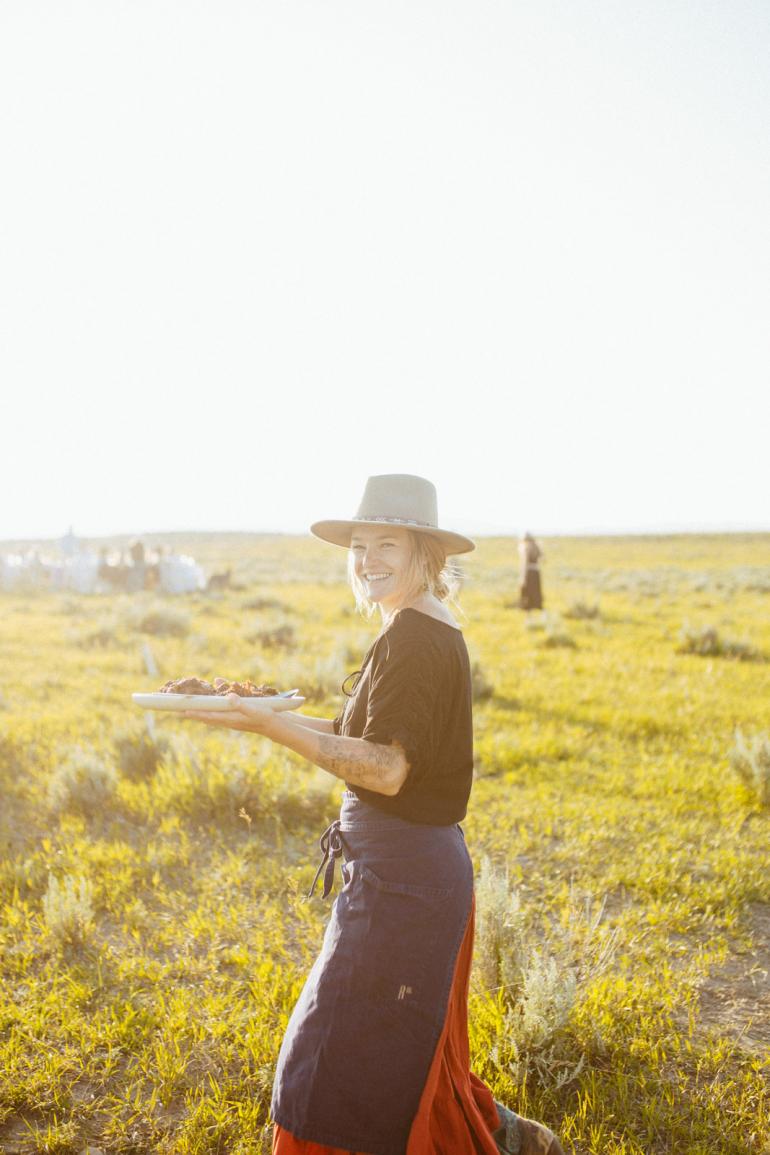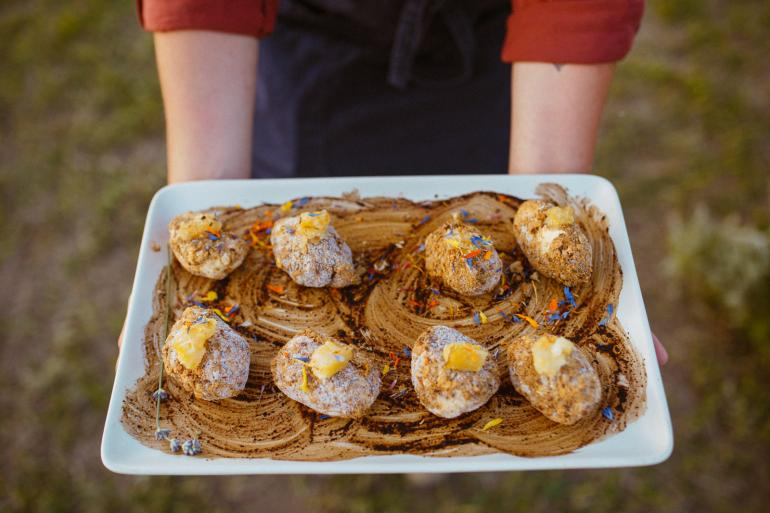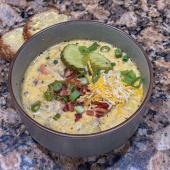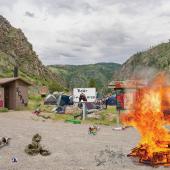Dining Afield
Big table under a big sky.
On a calm summer evening in mid-July, a crowd of locals and travelers alike has gathered in the sagebrush fields of North Bridger Bison outside Wilsall. The ranch, operating under Matt and Sarah Skoglund since 2018, is a little slice of our state’s heritage. There’s a herd of bison roaming about in their native habitat. A few old barns and sheds outcrop against the high plains and mountains. On this particular night, 150 guests have amassed for a delicious meal. This is Outstanding in the Field, Montana style.
I stride up to the host stand and set my blue-glazed ceramic plate on a short table stacked with many other plates from each attendee’s home, as per instructions on our invitations. The eclectic assortment reminds me of what I’d probably find in an old ranch house.
There’s cold beer on tap and a nice selection of wine. I grab a pint and graze about the crowd in the late-afternoon sun. There are women in wide-brimmed sunhats and long dresses, intermingled with men in t-shirts and jeans. I continually flag down servers toting plates of delectable hors d’oeuvres: bison tartare, wild-carp bisque, and empanadas with local greens and habanero sauce? Yes, please.
I chat with Megan, the event’s host and organizer. She’s been on tour with Outstanding in the Field for the entire year, roving between different farm towns in different states every few days and setting up ornate feasts that draw upon local agricultural heritage. I tell her this is a special place: a step back toward our roots, which we should cherish and hang onto in an increasingly commercialized food industry. She needs no convincing of that testament as she climbs up onto a stack of wood crates and calls across the crowd to introduce Matt and Sarah.
Matt’s voice booms across the field as he welcomes us to his ranch. He’s sporting a thick beard and his towering stature demands attention, but his tone is purely jovial. He explains the process of field-harvesting bison. When the time comes, each animal is taken in its pasture with a rifle from ten strides away. The bison trust Matt and don’t spook—almost as if they know he’s fighting the good fight out here. The gut piles are left in place to fertilize the soil where new grass grows, and the cycle continues. Each bison rises from the place of the last.
The bison whose flesh is gracing our table this evening was harvested not half a mile away.
Matt introduces his wife, Sarah—the rock of their family, in his words—and their kids, Otto and Gretta. Otto looks to be about eight and Gretta maybe six. The floor is open for questions. How many bison do you have? “About 160!” shouts Otto. Do they ever get feisty? “Nope! They just like to eat grass,” pipes in Gretta. It’s clear that this is a family-run business, where every member is involved in every part of the process.
On the way to dinner, we split into two groups for a brief ranch tour. It’s a small operation and there’s really not a whole lot to show: a herd of bison, a barn, and a ranch house. So I stroll with Sarah and we talk about livin’ out here on the prairie.
The dinner table is comically long, and curved in a subtle arc against the northern-Bridgers backdrop. The cook tents are staged about 50 yards away, and a succulent scent of seared meat and roasted vegetables wafts through the brush. Head chef Eduardo Garcia and his team of a dozen assistants are bustling between open wood fires and plating counters. I see the short table stacked with our personal plates, and throw a curveball by taking a different one than I brought. Other people are doing the same, and I realize this is part of the fun.
I carefully choose a seat between a group of older folks and a group of twenty-to-thirty-somethings. I’m keen to dabble in conversation both ways, but I inevitably chat more with my younger compatriots. Turns out we’ve got a few mutual friends back in Bozeman, and of course, lots of mutual interests. We talk about epic days skiing in the mountains behind us, and share plans to rack up miles on singletrack trails this summer. We banter about how Bozeman is changing for better and worse with transplants like us (the eavesdropping older folks roll their eyes). We’re fast friends and agree to stay in touch.
Wine flows freely, and the table teems with multicolored plates—a charming contrast against the bright-white tablecloth and napkins. The first course arrives: local (okay, all the food is local) grilled oyster mushrooms with goat cheese, bison pâté, and focaccia. We’re sparring for scraps of the last mushrooms when a green salad arrives, followed by a tray of roasted radishes in bison bone broth. And finally, the main event: smoked and braised bison hump, chuck roast, tongue, and cheek; pulled and seared to a delicate crisp on a hot griddle. A good ’ol potato salad on the side balances out the heaping plate of juicy, tender, savory meat. All right, I’ll stop toiling over the description of this food. You can imagine how good it was.
When the main course is finished, I wander over to the cook tents and thank chef Eduardo for the meal. He’s busy plating desserts, but gives me his contact info and agrees to chat another time. He’s been busting ass for hours out here and I see the passion in his every movement. This experience is probably more important to him than it is to any of the guests.
The dessert is lavender ice cream topped with fresh honey and dusted with toasted oats, on an espresso-glazed plate. Eduardo circles around and thanks everyone for attending. We’re all feeling jolly and the sunset is blazing over the Bridgers. I’ve been here for five hours, but the time has flown right by. Walking back to my car parked alongside the ranch’s access road, I’m grateful for places like this. New but familiar people, a beautiful landscape, a hardworking family behind a good cause, and a pile of terrific food. With any luck, we’ll see Outstanding in the Field return to these parts next year.
Photos by Lisa Heegaard, courtesy of Outstanding in the Field.


